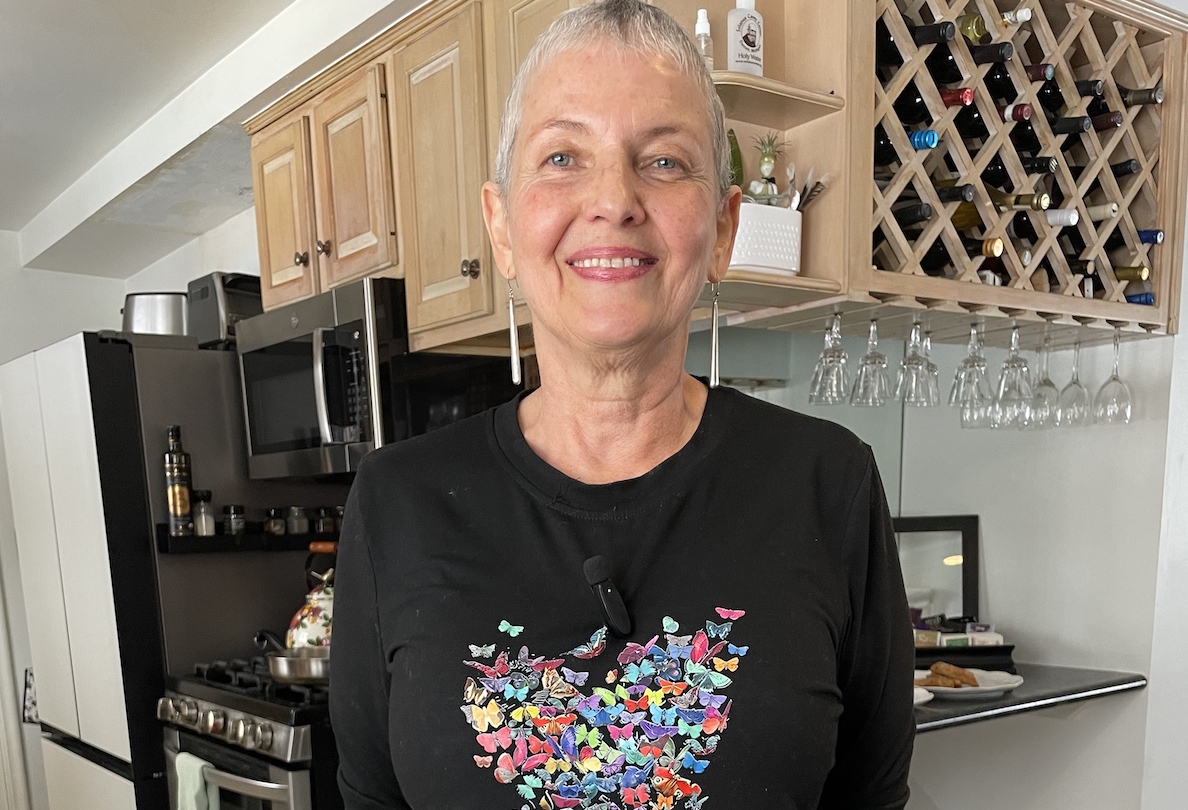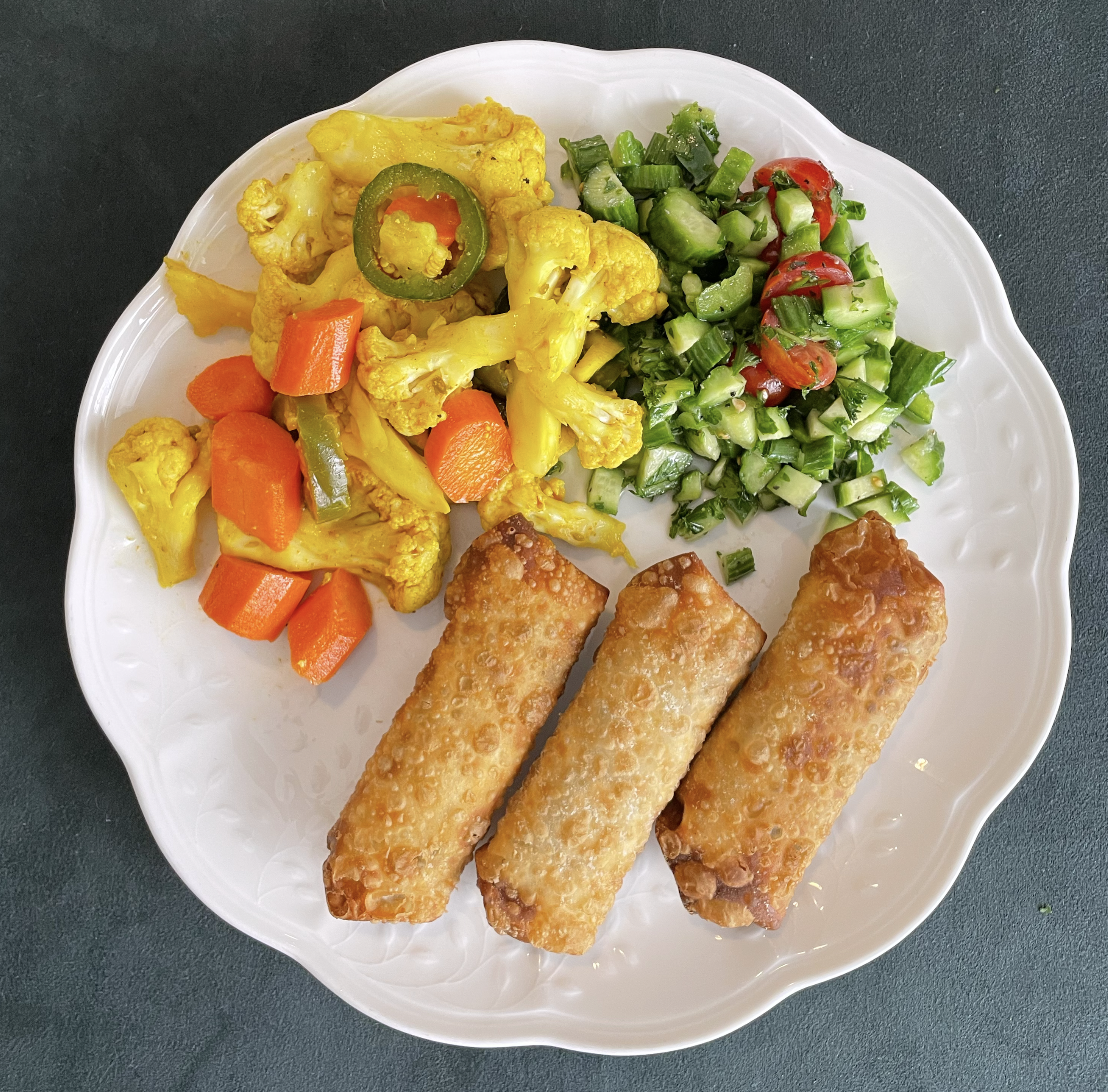Fast Food, Ancient Style
Lamya Kory’s unique take on Burek, the original “eat-on-the-run” dish
By Z. Z. Dawod
Lamya Kory is a free spirit. She is curious, inquisitive, and open to adventure — breathing in each moment with a lust for life that fills the room. To enter Lamya’s home, is to be transported to a place of vibrant positivity and possibility. With no shortage of projects to pursue, she brings a unique energy to each of her many endeavors.
As she recalls, spending time in the kitchen was not a primary focus during Lamya’s formative years. So, it’s not without some irony that she has managed to put a very original spin on an ancient staple dish.
Ground beef. Onions. Parsley. Spices. Salt. These are the simple ingredients that make up the filling of Burek, the delicious appetizer served in almost every Chaldean and Iraqi home. But not for Lamya Kory. “Growing up, I don’t remember my mom making them,” Lamya reflects.
Then, one day while visiting a friend’s house, Lamya was served Burek. She fell instantly in love with the flavor and resolved to get the recipe so she could try her hand at making it at home. Lamya had a hunch her family would enjoy Burek as much as she did, and she was right.
The recipe is not at all complicated, so it was not long before Lamya tried her hand at making a quick batch. She found almost all the necessary ingredients in her kitchen, except one spice: She was out of the baharat.
A natural-born improviser, Lamya was not about to delay the moment with a special trip to the grocery store for just one missing ingredient, especially for a specialty item like baharat. (This spice is not found in every store — for the best quality, skip the big chain markets and head straight to your local Middle Eastern grocer, where the selection will be freshest.)
Besides, Lamya viewed this as a challenge and was intent to make do with what could be found in her own kitchen. Seizing on the opportunity to do a bit of research, Lamya searched online for “What makes up the flavor of baharat?” She learned that there are many variations, with the most common ingredients being paprika, black pepper, cumin, coriander, cinnamon, cloves, cardamom, and nutmeg.
Of these, she had only black pepper and cloves on hand, but this would not deter her. Letting her imagination soar, Lamya decided to go with it and see how her little experiment would turn out.
She began by grinding up the cloves. Noticing the curry on her shelf, Lamya thought, “why not” and added some to the mix. Inspired by the free-form approach, she peeked in the refrigerator to see what else she could add for flavor, and saw a bag of Jalapeños, waiting to be put to use.
It’s a kind of law of nature that all grandmothers love to see their grandkids eating, but this appears to be especially true with Chaldean grandmothers. “They are a favorite when the grandkids are visiting, I can’t make enough! The kids devour them just as I finish frying, they can easily eat ten [pieces] before dinner,” Lamya happily reports.
Curry and jalapeños are not commonly used in Burek but proved to be a big hit with the entire family and Lamya’s unique recipe is now a staple for her children and grandchildren.
Dish Origins
Visiting with Lamya in her kitchen, I witnessed first-hand how fast she can whip up a batch. Once the meat is cooked, which doesn’t take long at all, the onions, spices and parsley were added. In no time at all, Lamya was wrapping the meat into rolls, frying and serving. It’s that simple and, perhaps, this is why recent ethnographic research suggests that Borek was likely the food of nomads.
The original name of this ancient dish is Börek (known as “Burek” in Iraq) and its roots trace back before the seventh century. While few clues exist about where and when the dish first appeared, it was likely invented out of necessity by the nomadic Turkics of Central Asia and originally eaten for sustenance.
Börek would have been cooked on a saj — a flat iron griddle, suspended over an open fire or placed on hot stones. Stuffed only with ingredients available on the steppe, Börek’s preparation reflected the harsh life of herdsmen: Butter and cheese which they made themselves from the milk of the sheep and goats; parsley, which grew wild in the plains; and grains that could be bought or bartered in markets.
In this way, Lamya’s “make-do” approach was very much in keeping with tradition, and she appears to have invented an original Burek recipe in the process.
Evolution Through Time
Alternate theories suggest that Börek derived from the Byzantine plakous — a type of flat cake, descended from the Roman placenta, consisting of two sheets of pastry and was mostly likely stuffed with honey, cheese and chopped nuts.
By the time of the Ottoman Empire, Börek had evolved into a savory pastry made from yulfka (delicate, filo-like dough) and filled with feta cheese, parsley, chicken, and, occasionally, minced meat. It was served as a centerpiece — and an integral part of a six-course meal — in the court of rulers, including Sultan Mehmet IV (r. 1648-87).
Like most cultures, Iraqi cuisine has been influenced by a myriad of regional traditions, including those from the Ottoman Empire. Through the centuries, Iraqis and Chaldeans have developed their own unique variations of regional dishes such as Börek and the tradition continues with Lamya Kory adding her own unique twist to this ancient favorite.
RECIPE
Burek
Recipe shared by Lamya Kory
Ingredients
3 lbs. beef — ground Sirloin and ground round
1 cup chopped onions (small one of each); yellow, sweet, and white
1/2 cup flat parsley, chopped
1/2 cup curly parsley, chopped
1 jalapeño pepper, chopped
2 teaspoon salt
1 teaspoon curry
1 teaspoon black pepper
1 teaspoon ground cloves
2 packs egg roll wraps
Coconut oil, as needed, for frying
Bowl of water
Instructions
Brown the meat in a skillet, breaking up into very small chunks. Once the meat has cooked evenly, sprinkle the salt, curry, black pepper and ground cloves. Mix well, then add one cup of the onions. Cook until all the liquid has evaporated. With the heat turned off, add the parsley. Note, parsley will blend and keep its flavor without over-cooking. Remove from heat and allow to cool.
How to Roll and Fry the Burek:
After the meat has had time to cool down, it’s time to wrap it up. Angle the egg roll wrap in a diamond position. Scoop approximately 2 tablespoons of the meat mixture onto the bottom corner of the wrapper. Lift the bottom corner over the filling, and roll one time.
Next, fold the sides toward the center and continue to roll. When an inch away from the end, dab the edge with water to seal. Repeat this process to complete the batch.
Heat the coconut oil in a skillet, large enough to accommodate 6 to 7 Burek at a time. Carefully place in the skillet and fry until golden brown on all sides. Drain fried burek on a paper towel-lined platter to soak up the extra oil. Serve hot and enjoy!


